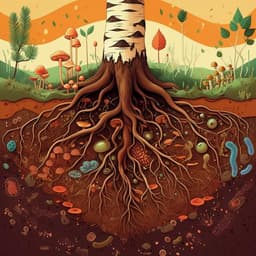
Environmental Studies and Forestry
Fungal communities decline with urbanization—more in air than in soil
N. Abrego, B. Crosier, et al.
This study reveals a striking decline in fungal communities due to urbanization, with air samples showing even lower diversity than soil. Conducted by Nerea Abrego and collaborators, this research highlights the potential of aerial fungal analysis as an indicator of urban ecosystem health.
Playback language: English
Related Publications
Explore these studies to deepen your understanding of the subject.







